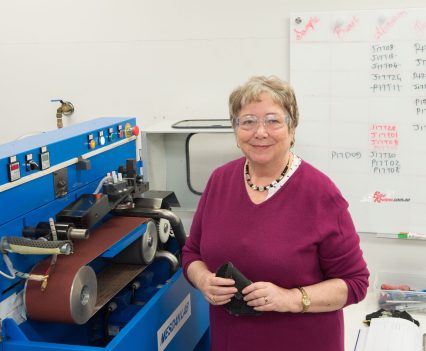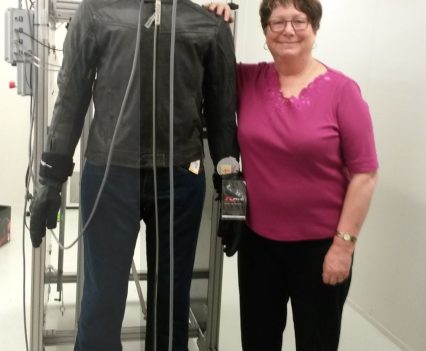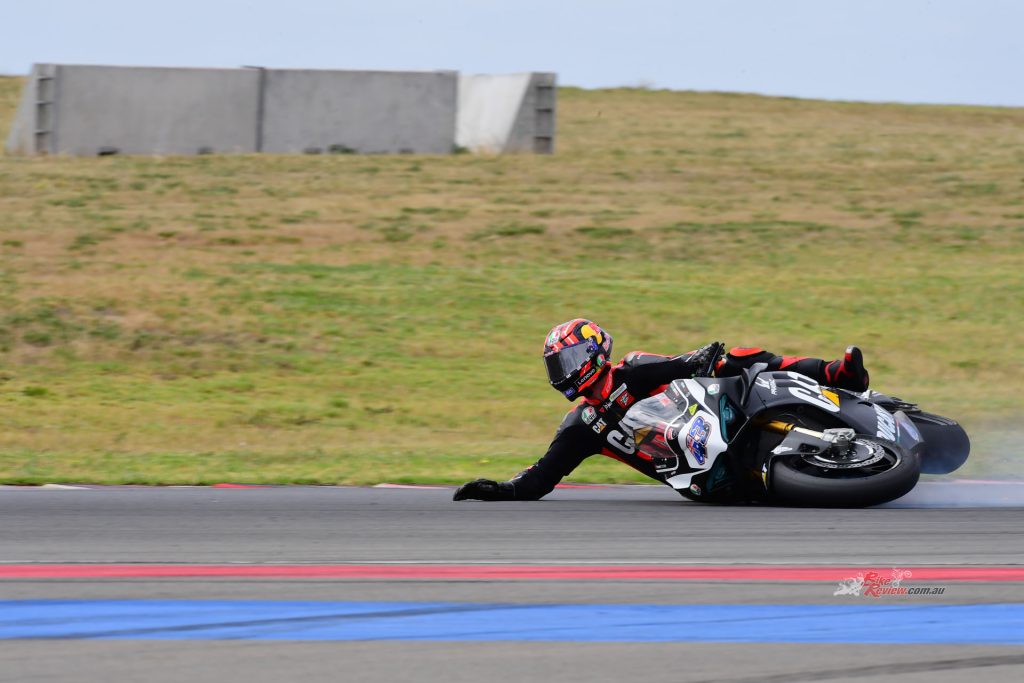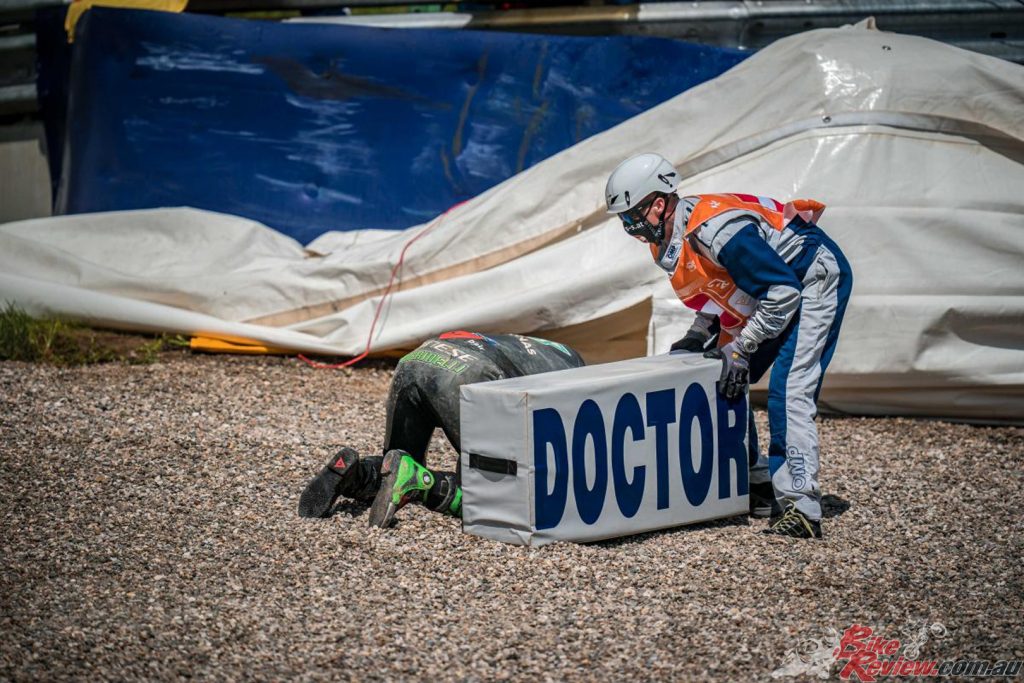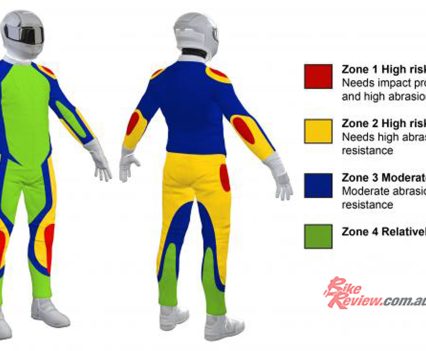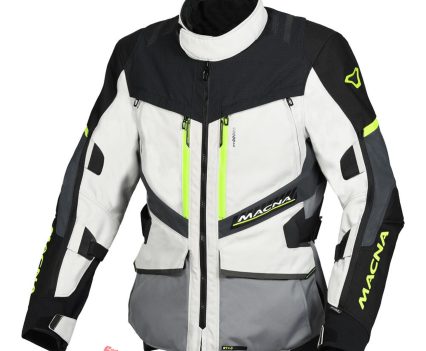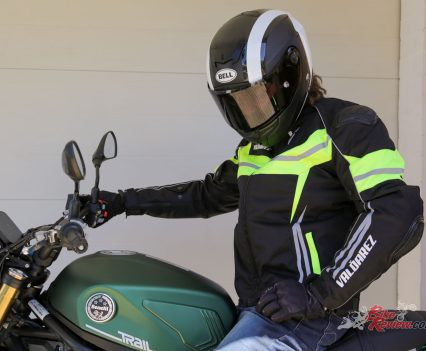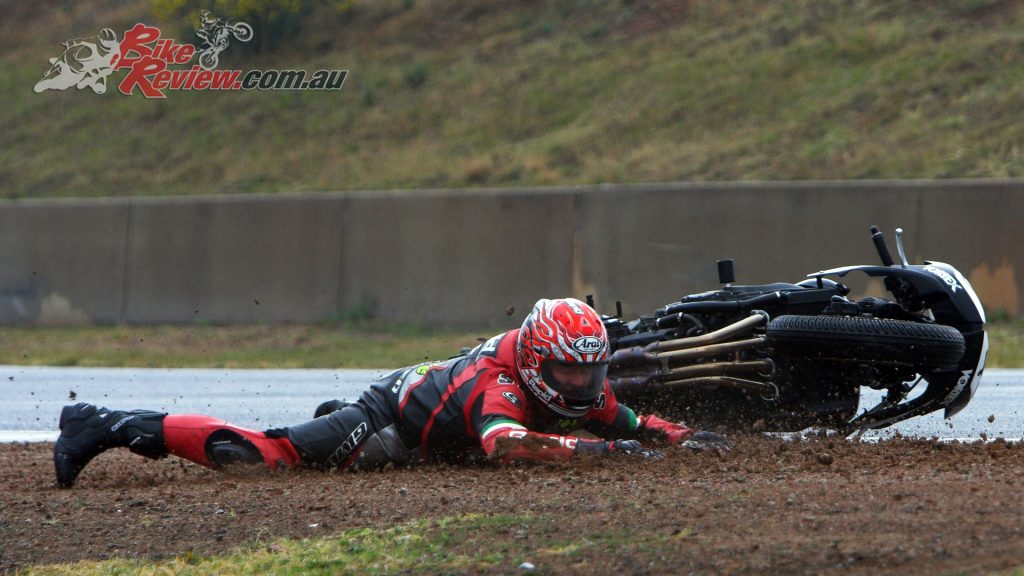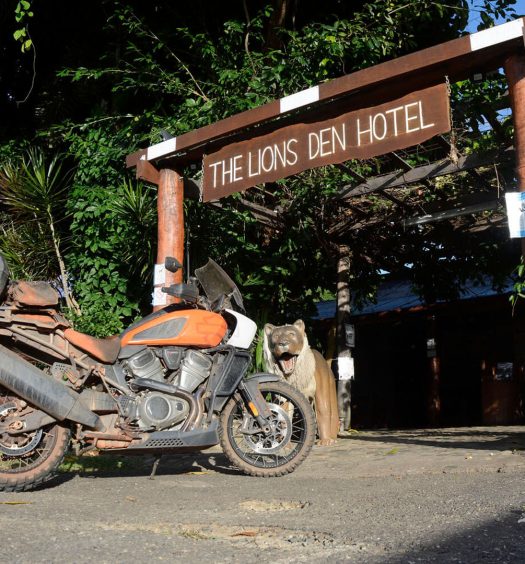Why I stopped Wearing Motorcycle Body Armour... The wild statement made by FortNine's Ryan Kluftinger. Peter 'The Bear' Thoeming has his say on the video. It's an eye opener...
With a bit of luck you have not seen Ryan Kluftinger’s FortNine video where he holds forth about the uselessness of body armour in motorcycle clothing. If you have, I hope that you haven’t been persuaded to throw away the pads from your gear.
I don’t think it’s a problem so much that his comments go against common sense – that’s not necessarily a bad thing. Common sense doesn’t serve us as well as we sometimes hope it will. But Ryan misquotes the source of his contention, and that is a problem [FortNine YouTube channel About statement is “We create motorcycle content with a rare twist. The engine behind our channel is fortnine.ca – Canada’s largest online powersport retailer.” – Ed]
“In Ryan’s video he explains that he no longer wears motorcycle body armour (IP) because it doesn’t work”…
What makes it worse, at least as far as I’m concerned, is that the source in question is work by Dr Liz deRome, who is a friend of mine. Liz is exceptionally well qualified. Her GEAR study (which Ryan quoted so selectively) investigated the performance of motorcycle protective clothing and body armour in real world crashes and highlights the key findings. The study was Liz’s PhD work.
Liz deRome also wrote Positioned for Safety – the first Australian road safety strategic plan written in consultation with riders 2002 and 2007, The Good Gear Guide, 2009. Her PhD research led to the development of MotoCAP and, most recently, a guide to designing and manufacturing motorcycle protective clothing. She was also involved in the development of the Victorian Motorcycle Graduated Licensing System. In 2022 Liz received the inaugural ACRS Award to Women in Road Safety. MotoCAP was the winner of the FIM 2019 Road Safety Award.
In Ryan’s video he explains that he no longer wears motorcycle body armour (IP) because it doesn’t work, which is not what the GEAR study says. Liz tried to sort out the mistake. “I did respond online to the FortNine post on YouTube,” she said. “It was a pity that Ryan had misinterpreted my findings and did not appear to have read my journal article in detail, nor the second one where we followed-up riders’ recovery. In my response I tried to correct his claims without getting into a battle royal, [but] my post seems to have been lost in the huge volume of other responses… It was fortunate that the majority of others who piled on to him with their views were continuing to wear their IP.
“It was a pity that Ryan had misinterpreted my findings and did not appear to have read my journal article in detail”…
“The key issues included that Ryan misread the article as suggesting that there was no evidence of IP providing protection from fractures. However, he appears to have misunderstood the function of IP – which is not to prevent fracture injuries but injuries in general – including open wound injuries. In my research, riders wearing protective clothing fitted with IP were significantly less likely to have any injuries at all and, if injured, were less likely to be hospitalised.
“Fractures are relatively rare compared to open wound injuries. The number of participants required for the study was calculated statistically to ensure the sample was sufficient to determine whether any differences in injuries between protected and unprotected riders was statistically significant. We would have needed a much greater number of participants to get statistically significant results for fractures.
“To date research indicates that the severity of fractures may be mitigated by IP but is less likely to be prevented. For example, riders wearing IP may be less likely to have complex/compound fractures and more likely to have simple breaks, which heal better and are less likely to involve infections”.
Liz has continued research in the field since that PhD study. Her post graduate work followed up those findings and investigated whether there was a conflict between rider thermal comfort and injury protection, a very important question in Australia with its hot summers. She found that riders are three times less likely to ride protected when they’re out in hot weather.
“We selected the 10 most popular garments including leather, textile and denim,” she says, “and tested them for abrasion resistance (at Deakin Uni) – none would have passed the CE standard EN 13595 – and thermal resistance (thermal comfort) on a thermal sweating manikin at 30C and 40% humidity at RMIT Uni. All performed poorly. The suit that performed worst for thermal comfort was then tested on 12 volunteers in a Climate chamber at Wollongong Uni.
“We compared each rider in three trials each at 25C, 30C and 35C with 40% humidity and in both full gear and when wearing jeans and long-sleeved shirt but with boots, gloves and helmet.
“The Climate chamber found that thermally resistant garments significantly increased wearers’ skin & core temperatures leading to impaired reaction time, mood and perception of workload. They sweated so much I had to mop up puddles on the floor between tests. The results demonstrated that being too hot could impair riding performance and safety”.
So here are a couple of genuine conclusions which are supported by the data: don’t throw away your body armour, and stay cool while you’re riding in summer. Unlike Ryan, I have the data to justify both of those.
The opinions published in this Website are not necessarily those of the publisher. (JPMedia Privacy and Copyright Statement)
Editor’s Note: If you are reading this article on any website other than BikeReview.com.au, please report it to BikeReview via our contact page, as it has been stolen or re-published without authority.




